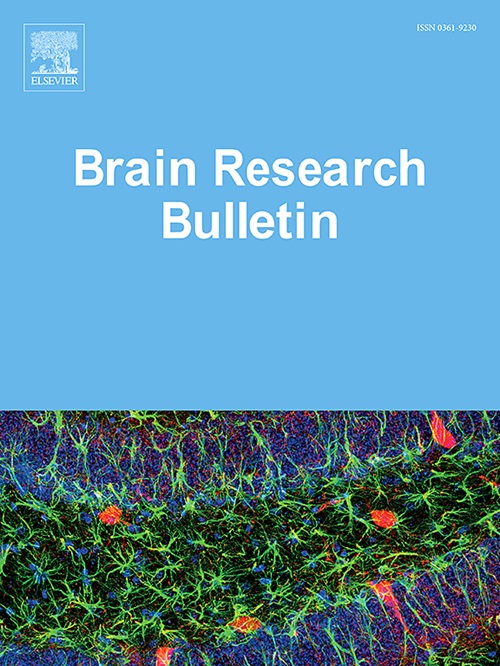阻塞性睡眠呼吸暂停综合征的肠道微生物组成变化也与白天过度嗜睡有关。
IF 3.5
3区 医学
Q2 NEUROSCIENCES
引用次数: 0
摘要
梗阻睡眠呼吸暂停综合征(OSAS)被认为是几种合并症的危险因素。在OSAS动物模型和儿科患者中记录了肠道微生物组的改变。本研究分析了OSAS成年患者的肠道微生物组成,并与对照组进行了比较。此外,我们还评估了白天过度嗜睡(EDS)对肠道微生物群的影响。方法:对成年OSAS患者进行多导睡眠图记录,并完成Epworth嗜睡量表(ESS)评估EDS。收集患者和健康对照者的粪便样本进行比较。通过16S宏基因组学和多种生物信息学算法评估了群落组成、群落多样性、类群丰度差异和样本生态失调。OSAS患者根据EDS (ESS评分≥10)分为两组,评估临床、多导睡眠图和粪便数据的差异。结果:23例OSAS患者与44例对照。患者的肠道微生物群多样性存在显著差异,特别是在定性α多样性指标(Faith’s PD Kruskal-Wallis检验,p值=0.003;Number_of_Observed_Features, p值=0.001)。OSAS患者倾向于聚集在一起,至少对于Jaccard和Unweighted UniFrac基于距离的PERMANOVA测试(q值分别=0.02和=0.003)。尽管在全球范围内,OSAS患者不能被认为是“生态失调”,但在OSAS患者和对照组之间检测到一些分类群的丰度不同。伴有和不伴有EDS的OSAS患者细菌组成差异明显。结论:OSAS与成人患者肠道微生物组改变有关。OSAS中的EDS似乎表征了不同的肠道微生物组组成,尽管只能假设肠道介导的EDS在OSAS中的作用。本文章由计算机程序翻译,如有差异,请以英文原文为准。
Gut microbiome composition changes in obstructive sleep apnoea syndrome also in relation to excessive daytime sleepiness
Introduction
Obstructive sleep apnoea syndrome (OSAS) is considered a risk factor for several comorbidities. Alteration in gut microbiome was documented in OSAS animal models and in paediatric patients. This study analysed gut microbiome composition in adult patients with OSAS compared to healthy controls. Further, the effect of excessive daytime sleepiness (EDS) on gut microbiome was evaluated.
Methods
Adult patients with OSAS underwent polysomnographic recording and completed the Epworth Sleepiness Scale (ESS) to assess EDS. Faecal samples were collected and compared between patients and healthy controls. Composition, community diversity, differences in taxa abundance profiles and sample dysbiosis were evaluated through 16S metagenomics and multiple bioinformatics algorithms. OSAS patients were distributed in two groups according to EDS (ESS score≥10) to assess differences in clinical, polysomnographic and faecal data.
Results
Twenty-three OSAS patients were compared to 44 healthy controls. Patients presented significant differences of gut microbiome biodiversity, specifically in qualitative alpha diversity metrics (Faith’s PD Kruskal-Wallis test, p-value=0.003; Number_of_Observed_Features, p-value =0.001). OSAS patients tend to cluster together, at least for Jaccard and Unweighted UniFrac distance-based PERMANOVA tests (q-values=0.02 and =0.003, respectively). Several taxa were detected as different in abundance between OSAS patients and healthy controls, although, globally, OSAS patients cannot be considered as “dysbiotic”. Differences in bacteria composition were evident between OSAS patients with and those without EDS.
Conclusions
OSAS is associated with gut microbiome alteration in adult patients. EDS in OSAS seems to characterize a different gut microbiome composition, although it can be only hypothesized a gut-mediated effect on EDS in OSAS.
求助全文
通过发布文献求助,成功后即可免费获取论文全文。
去求助
来源期刊

Brain Research Bulletin
医学-神经科学
CiteScore
6.90
自引率
2.60%
发文量
253
审稿时长
67 days
期刊介绍:
The Brain Research Bulletin (BRB) aims to publish novel work that advances our knowledge of molecular and cellular mechanisms that underlie neural network properties associated with behavior, cognition and other brain functions during neurodevelopment and in the adult. Although clinical research is out of the Journal''s scope, the BRB also aims to publish translation research that provides insight into biological mechanisms and processes associated with neurodegeneration mechanisms, neurological diseases and neuropsychiatric disorders. The Journal is especially interested in research using novel methodologies, such as optogenetics, multielectrode array recordings and life imaging in wild-type and genetically-modified animal models, with the goal to advance our understanding of how neurons, glia and networks function in vivo.
 求助内容:
求助内容: 应助结果提醒方式:
应助结果提醒方式:


